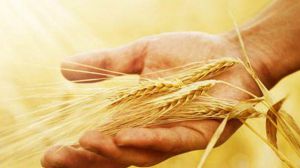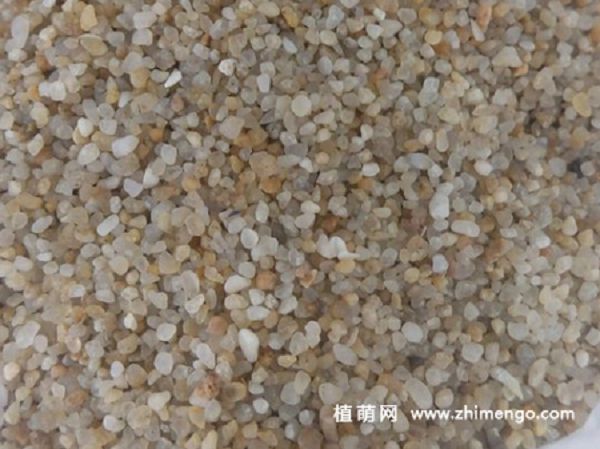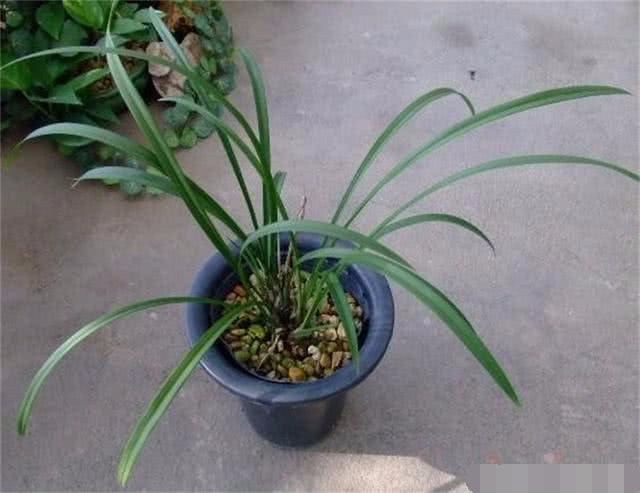Coarse Learn more about Coarse
-
What are the common coarse grains?

What we usually call "coarse grains" mainly refers to whole grains, mixed beans and potatoes. The reason why coarse grain is coarse is that it has less processing technology and more nutrients preservation. compared with white rice and noodles, coarse grain is usually more chewy and full. Which means
2020-11-27 Common yes coarse grains what we usually say " -
Is wheat coarse grain?

Wheat is not coarse grain, it is one of the fine grains, and the other is rice. The difference between fine grain and coarse grain is that its products are relatively soft and delicious, delicate and soft, and the finished products of coarse grains can not achieve this taste. In addition to white flour and white rice, other crop products are coarse grains with rough taste and high nutritional value.
2018-08-27 -
Short coarse melon affects zucchini benefit how to control zucchini short coarse melon

Short coarse melon affects zucchini benefit how to control zucchini short coarse melon
2018-07-11 -
The countryside saw the old coarse cloth again, full of memories.

The countryside saw the old coarse cloth again, full of memories.
2019-02-20 -
High-yield techniques of Pleurotus ostreatus cultivated in coarse sawdust fermentation material bag

At present, with the development of edible mushroom industry, the demand for raw materials is increasing. The price of fine sawdust in three northeastern provinces has soared in recent years, but coarse sawdust has become waste (such as coarse sawdust leaked from electric sieves on chippers and coarse sawdust crushed by branch shredders). The author uses the local rich coarse sawdust as the main material for fermentation to cultivate Pleurotus ostreatus, which is summarized as follows: 1 the tested strain Pleurotus ostreatus 2026 was introduced from Shijiazhuang High-tech Edible Mushroom Station in Hebei Province to provide mother species. The original seed is corn kernel medium, 99% corn kernels and 1% gypsum. Put the corn kernels
2019-01-16 -
Winter anti-zucchini short coarse melon

Winter anti-zucchini short coarse melon
2018-07-01 -
How to produce high quality rabbit wool

Rabbit hair can be divided into three types: fine hair, coarse hair and two-type hair. Fine hair, also known as rabbit cashmere, has an average fineness of 12 to 14 microns, the shortest of the three types. There is a marked irregular bend. Because fine wool has good physical and chemical properties, its textile value is very high in the wool textile industry. Generally speaking, its price is also higher than the other two types. For this reason, mastering the production technology of rabbit cashmere and producing more fine hair is an effective means to improve the production efficiency of wool rabbits. 1. Understand the quality requirements of rabbit wool. Rabbit velvet should be pure white, all loose hair, no impurities.
2019-01-11 -
China's imports of coarse grains and soybeans will increase by more than 40% in the next decade.

By 2024, China's net imports of coarse grains and soybeans are likely to increase by 46 per cent and 40 per cent respectively from current levels. China has been a net importer of cotton, soybeans, rapeseed, barley, soybean oil and palm oil for at least the past decade, the report said. Since 2008 / 08 / 09
2016-03-20 In the future China coarse grains and soybeans will increase in the next ten years. -
Soil covering Technology in Mushroom cultivation

In the process of mushroom cultivation and management, soil mulching is an important work after sowing, and the technical requirements are very high. 1. Selection and treatment of soil-covering materials (1) selection of soil-covering materials requires good water absorption and water retention, as well as good ventilation, preferably neutral clay loam with a viscosity of about 40%, aggregate structure and a small amount of humus. This kind of soil does not stick when it is wet and does not spread when it is dry, and there are cracks at the edge of the soil particles. By
2019-01-16 -
What about the rotten roots of the orchid? soaked in potassium permanganate and buried in the sand.

What about the rotten roots of the orchid? soaked in potassium permanganate and buried in the sand.
2020-01-09 -
The method of raising pigs in rural areas is simple and practical.

The method of thin feeding of clinker: the crude fiber of the feed is softened after being cooked, which can not only effectively improve the digestibility of the coarse feed, but also reduce the feed volume and increase the feed intake of pigs. Wet feeding method of raw meal: it is simpler than the thin feeding method of clinker, and saves firewood, labor and equipment at the same time.
2020-11-08 Suitable for rural areas pig raising method simple practical abstract clinker -
Raising orchids with two treasures in the river can produce more white roots.

Hello, everyone. I'm glad you can click on this article in the midst of your busy schedule. I hope today's article can bring you surprise and joy. If you are satisfied with the article, please follow the editor to forward the article and share it. The editor wishes.
2018-10-17 -
Pleurotus ostreatus on top of mud mushroom

Symptoms: it mainly appears in the early stage of mushroom emergence, the fruiting body is low, usually occurs in the culture material, the material surface or the lower part of the coarse soil layer, and breaks the top of the soil when it grows up. The causes are as follows: 1. When the temperature, humidity and air conditions in the culture material are suitable for fruiting body growth, the mycelium will kink around the soil to form a primordium. After the primordium differentiation, it grows upward and comes out of the top mud. If the upward conditions are not suitable, it will turn around and grow under the bed to form bed mushrooms. 2. The water transfer time of coarse soil is too long, and the mushroom house is ventilated after water transfer.
2019-01-15 -
Winter management of mushroom bed

After the harvest of autumn mushrooms, if we do not take measures to increase temperature and continue to produce winter mushrooms, then the mushroom bed will enter the winter management stage. The management of the mushroom bed in winter will have a great impact on the mushroom harvest in the coming spring. Therefore, we must do a good job in the winter management of the mushroom bed. First, do a good job in the heat preservation and ventilation of the mushroom room in winter, the room temperature of the mushroom room had better be kept above 3 ℃, so as not to freeze the room, so as to prevent the mycelium from freezing. In order to maintain this temperature in the mushroom room, it is necessary to check the air leakage on the four walls of the mushroom room before entering winter.
2019-01-15 -
Introduction of fine breeds and characteristics of wool rabbit

What is a hairy rabbit? Hairy rabbits are collectively called Angora rabbits in the world. Due to different breeding directions and methods, different strains have been formed. In recent years, the development of hairy rabbits in my market is quite good, and many farmers have grasped this characteristic after finding a market.
2020-11-27 Hairy rabbit fine breed and its characteristics introduction what yes hairy rabbit -
Breeding Technology of Neijiang Pig

Breeding Technology of Neijiang Pig
2018-06-29 -
Throw the sand into the basin, the yellow leaves don't rot the roots, the roots blow out, and the bugs all around.

Friends who often grow flowers will always have the problem of soil consolidation and even worms drilled in the soil. Don't worry, at this time, as long as you grab a handful of sand and throw it into the basin, all your worries will be solved!
2018-03-07 -
Good soil can grow prosperous flowers. This is the way to match the soil. The rose uses a long rub.

Flower soil seems simple, but the soil is not well matched, either stagnant water rotten roots or lack of fertility, poor growth. Today, Huahua will tell you how to match the soil so that the flowers can grow well! It is commonly used to grow flowers. Daquan learned to match the soil first.
2018-06-13 -
Goat feed coarse formula

Feed formula for goats at different stages 1. Feed formula mixture for breeding rams in non-breeding period: grass powder 70%, concentrate feed 30%. Concentrate feed formula: corn 55%, wheat bran 28%, soybean meal 109%, sheep premix 5%, salt 2%. Methods: grass powder concentrate feed was mixed and fed evenly.
2020-11-11 Goat Feed roughage Formula different stage -
Orchid Plant Ingredients

Plant material is the material basis for orchids to survive, and it is also one of the factors to promote more buds, vigorous roots and strong seedlings. Here are a few formulas that have been tested and verified by the author for different orchids. Formula 1: mushroom soil 70%, chaff charcoal 20%, coarse river sand 10%, plus 10% bone charcoal (this formula is suitable for planting spring orchid,...
2018-03-01
